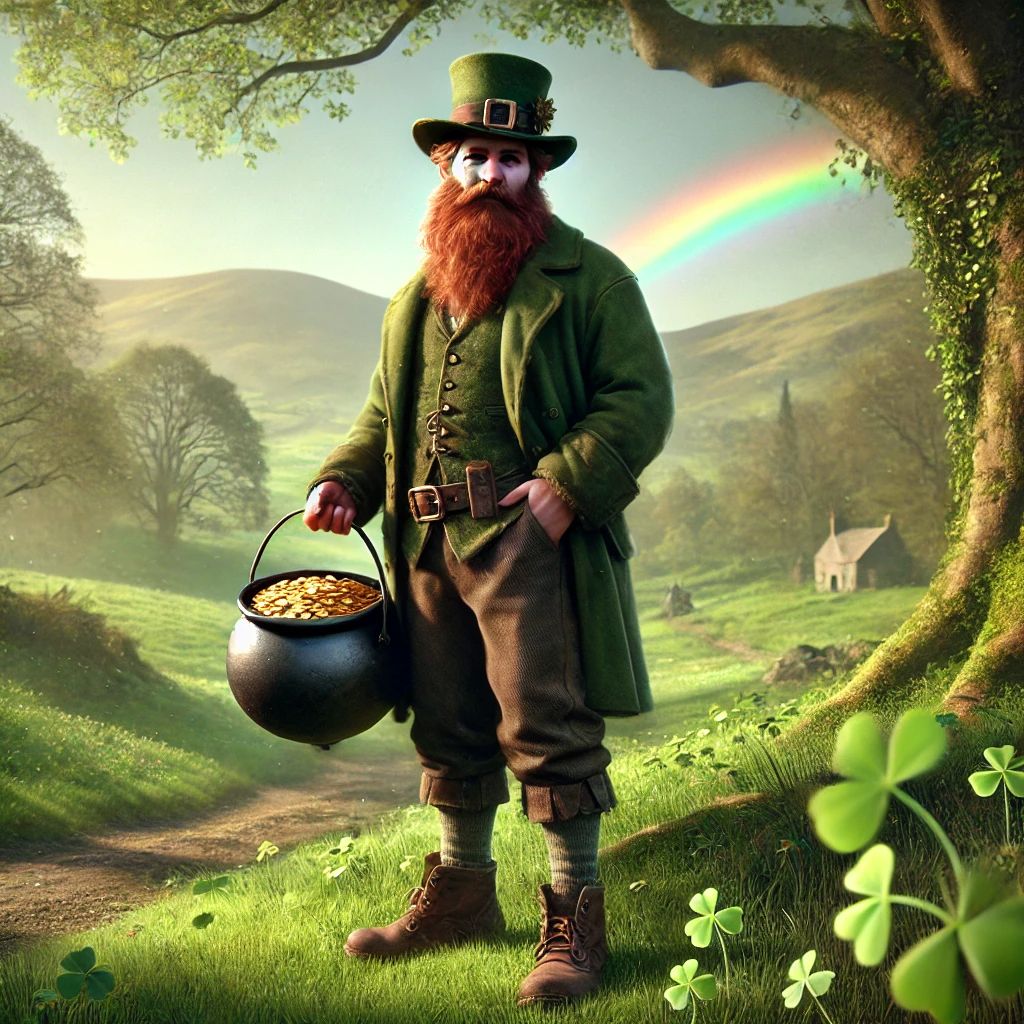Leprechauns

The Irish leprechaun is a well-known figure in Irish folklore, typically depicted as a small, bearded man dressed in a green coat, buckled shoes, and often a hat. Known for their trickery and quick wit, leprechauns are often associated with guarding hidden pots of gold, which they conceal at the end of a rainbow. While they might grant wishes if captured, leprechauns are clever and resourceful, usually managing to escape with their treasure intact.
Originally, leprechauns were associated with cobbling or shoemaking, which was thought to be a rare craft among fairies. This association hints at their hardworking nature, as folklore often portrays them with a hammer and a shoe. Leprechauns are considered solitary fairies, unlike other Irish fairy folk who may live in groups.
Though mischievous, they are not typically malicious, instead pranking those who try to catch or trick them. The name “leprechaun” itself may derive from the Old Irish luchorpan, meaning “small body.” They symbolize cleverness, resilience, and a bit of good fortune, but also serve as a cautionary figure, warning against greed and the folly of easy riches.
